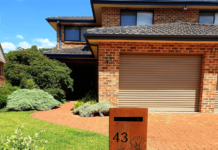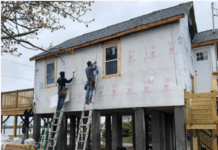
What makes a space extraordinary during the night is the play of light and dull, highlighting highlights that you may not observe during the day and making complexity and shadows utilizing the structures and plants in your yard. Playing with these components makes interest and show, and sufficiently bright space will frequently be one in which you need to remain.
Create Charm With Candles and Lanterns
Lighting a garden with lights such as lanterns and candles is an essay and an effective idea. Wrap twinkle lights around arches and arbors, or drape them through trees or even pots and baskets. A warning, however: although some party lights can be left outside all the time, others need to be brought in when it starts raining.
Improvised lights can also look far better than you might think, and what’s more, they cost mere pennies and are very environmentally friendly. Tealights in old baked-bean cans or jars look great when used en masse. You can even paint the outside of jars with special glass paints for a stained-glass effect if you wish, and DIY stores stock bags of 100 tealights for less than £10, making them an easy and affordable way to enjoy your outdoor space throughout the winter months. For a smart look that doesn’t look too formal, mix, and match lanterns in a variety of shapes and materials.
Add Path Lighting
Path lighting is soft to moderately bright safety and landscape lighting designed to help you navigate walkways while attractively highlighting them. Install it on the ground along both sides of main walkways from the back door to your fence door, along with stepping stones from the main walkway to a backyard feature like a fountain, and/or around flower beds to emphasize their contours.
Path lighting is often available in low-voltage (12- to 15-V) and solar LED options consisting of a decorative bulb housing unit attached to a short stake you drive into the ground. If you choose low-voltage path lights, you’ll need to use a transformer to reduce the 120-volt house current to 12 volts; energy-saving solar versions, meanwhile, require no extra wires. Even if your walkways are shaded, these lights will stay bright for several hours after dusk, thanks to a solar rechargeable battery or remote solar panel you station somewhere else in the yard that gets direct sun.
Add Inground Lighting
An inground light, or well light, is typically a circle-shaped fixture that installs directly into the ground and is often used to illuminate walkways and driveways. Inground really heighten the sophistication and visibility of the features in your yard. It helps create drama and atmosphere with an uplight effect that illuminates the whole of a tree or structure. It also silhouettes the characters that stand around the yard; those you wouldn’t be able to see on a typical night. They’re best mixed with spotlights, if and when you can blend them, but uplighting on its own can be a strong lighting solution.
Add Lighting On Outdoor Wall
Outdoor wall lighting is a low-voltage, moderately bright form of safety and accent lighting used chiefly to illuminate and improve navigation in small recessed areas of the yard where shadows lurk. You can mount them on any vertical surface, such as along the interior of your pergola; above stairways; and around sunken seating areas, pools, and other low-lying spots. You can use this type of lighting in your Garages or Mini Storage Buildings.
Wall sconces with an open-bottomed design (i.e., the bottom of the bulb housing is uncovered) are the best option because they cast the maximum amount of light down onto recessed areas. If you have scarce space on exterior walls, consider semi-flush-mount sconces (i.e., the light is attached to a narrow arm that mounts to a plate on the wall) instead of flush-mount sconces with the whole fixture up against the wall.
Create Some Effects
For the first time lighting designer, the degree spread of the lamp is important when considering what you want to illuminate. You also want to make sure you purchase fixtures for all external lights so that the light source is hidden or obscured.
When creating your lighting configuration, keep in mind that a spotlight has a 15-degree spread, a narrow flood light offers 30-degree coverage and a wide floodlight has a 60-degree saturation. If you want to highlight the front landscape of your house, Burks recommends using floodlights that are shining down from the corner eaves. “If you were to go with a 15 or 30 degree [light], you’re not going to light up all of the plants so go with as wide of a beam spread as you can.” You would take the same approach if you wanted to accent the facade of your house with a wall-washing effect. Shining the light along the side of the wall in a sideways angle will give it an even and soothing glow.
Add Lighting on Deck
Deck lighting is standard-voltage, moderate- to high-intensity lighting designed to help folks get up, down, and across the deck by night, avoiding tripping hazards and visual clutter, and also accentuate nearby garden features.
It’s installed as a series of LED lights recessed into grooves in the surface so that you can safely walk over them, never even feeling them underfoot. Deck lights also belong around the perimeter of the deck surface, in between the individual steps of stairs, and/or along deck stair railings.
Use LED Outdoor Lights
LEDs (light-emitting diodes) are popular as they are particularly useful for long cable runs, and can be used almost anywhere: in step lights, as recessed spots in paving and decking, even under water spouts and fountains. Some LEDs come in different colors and there are others where you can program the color to suit the mood. You will pay more for LED lights than standard fittings, but the bulbs last a lot longer and the fittings are more discreet. Permanently colored lights are best used in moderation and specifically in areas where a distinct focus or style is required.
Author Bio:
Lucerin Saldana
Lucerin Saldana writes for topics like Home Improvement, Kitchen decor, Garden or travel-related topics additionally; he has a passion for the metal building industry for more than ten years, Lucerin has become an experienced building specialist in this industry. Her goal is to help people with his vast knowledge to assist them with his best suggestions about different Prefab Metal buildings such as Playground Equipment, garages, Metal Barns, utility buildings, and commercial structures.












